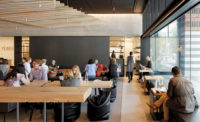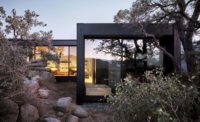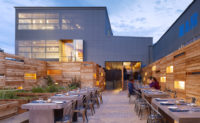The Google Store in Mountain View, California, has many things you might expect in tech retail: an alcove for repairs and support, a sofa-filled room for lectures and events, walls of white shelves lined with “grab-and-go” products, and a merch area loaded with branded mugs, T-shirts, and tchotchkes. But then, in the middle of all this commonness, the 5,840-square-foot flagship store has something altogether unexpected—a slew of wooden boxes seemingly stacked askew and sent snaking through the long space.
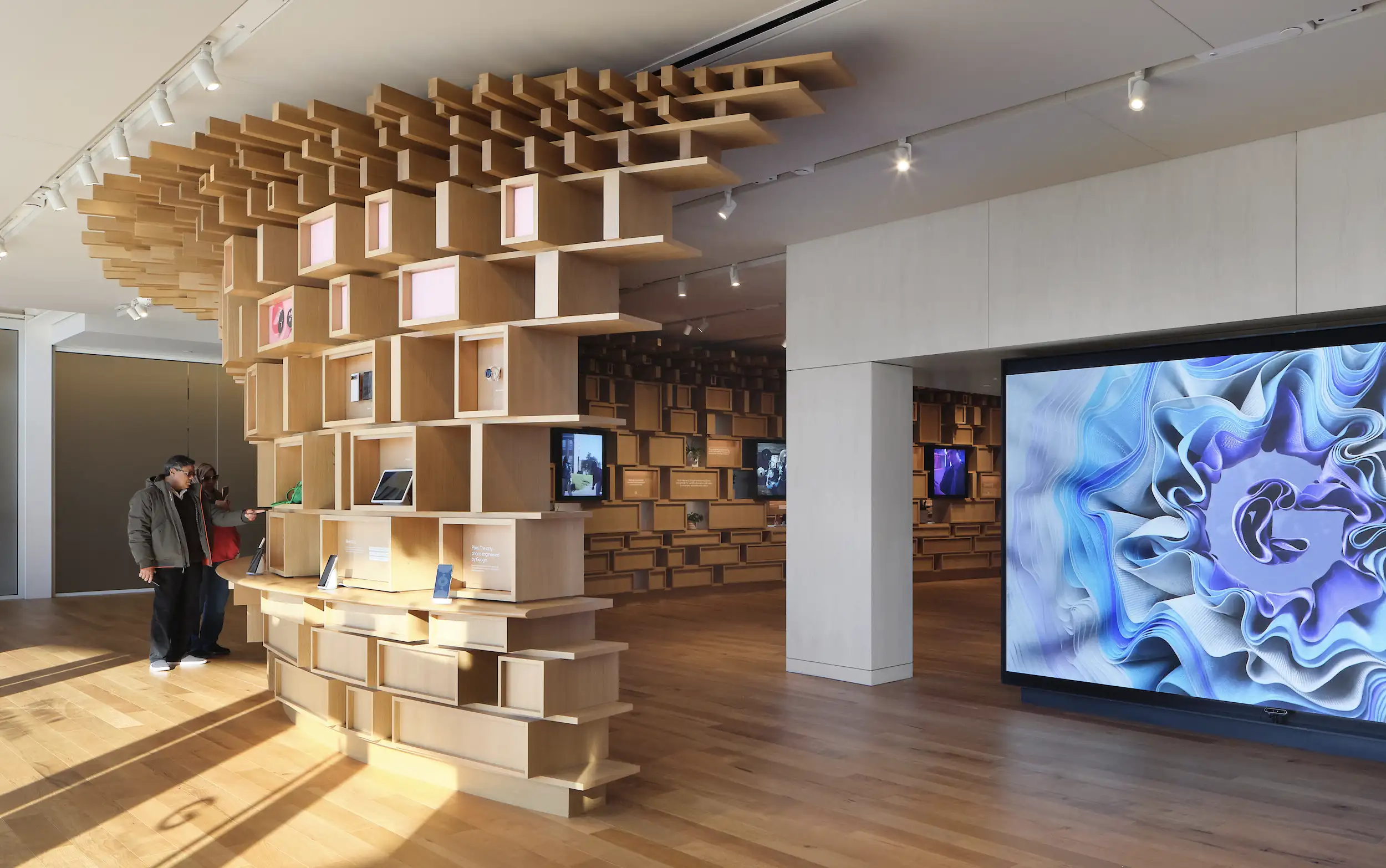
Photo © Adam Rouse
This unanticipated insert has a surprising origin story. “We thought about the precedent of a cabinet of curiosities,” says Kent Chiang, principal and project architect at San Francisco–based Aidlin Darling Design. The firm reinterpreted 17th-century vitrines housing taxidermy and astrolabes into a 120-foot-long, S-shaped, compartmentalized, interactive display of the latest Google devices. “It has this idea that it’s holding something,” says Chiang, “and then tries to understand how it fits into the entire body of knowledge.” While a cabinet of curiosities may seem an anachronistic source for a forward-looking tech company, the resulting wall allows for great variation and malleability, key to exhibiting Google’s everchanging product line.
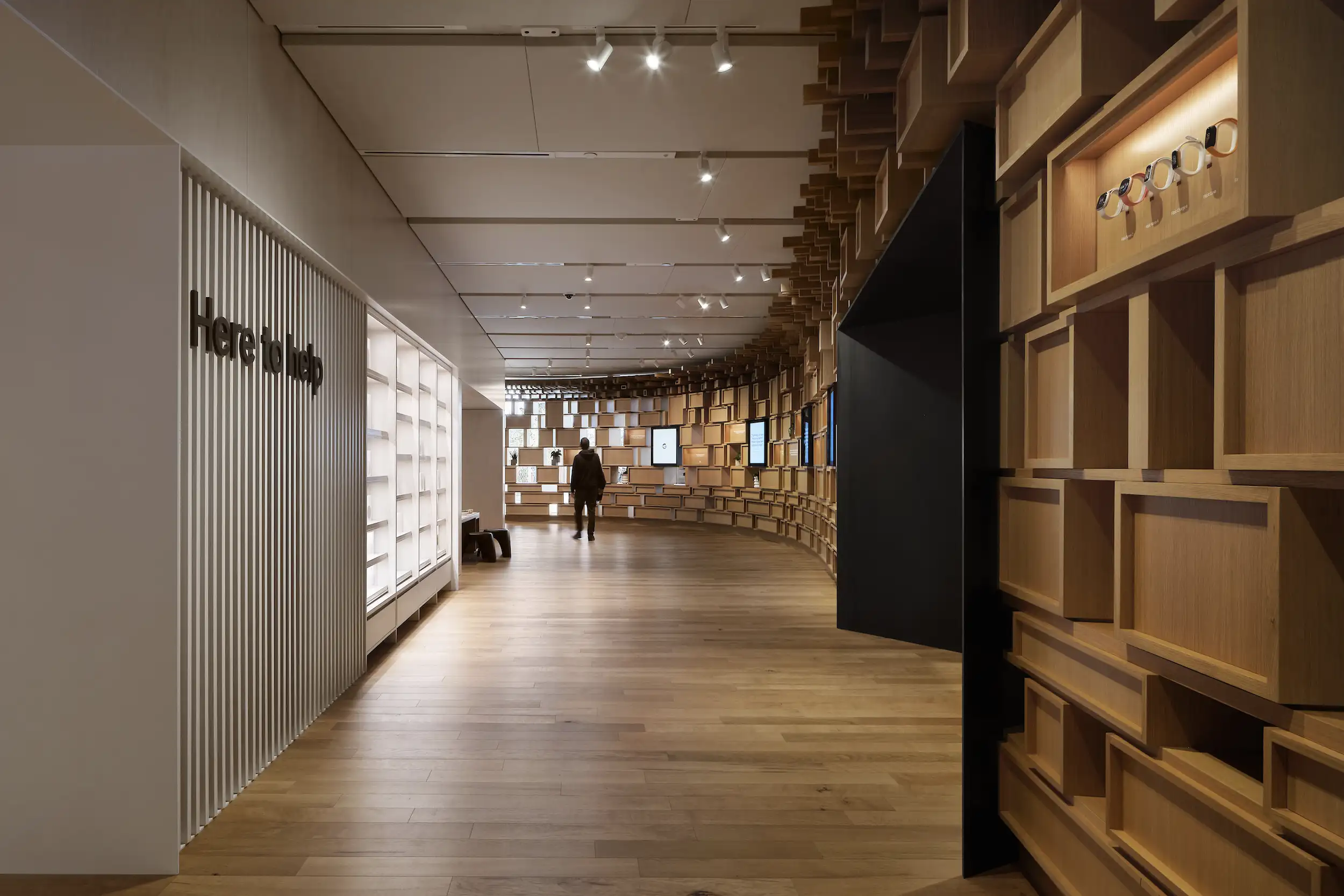
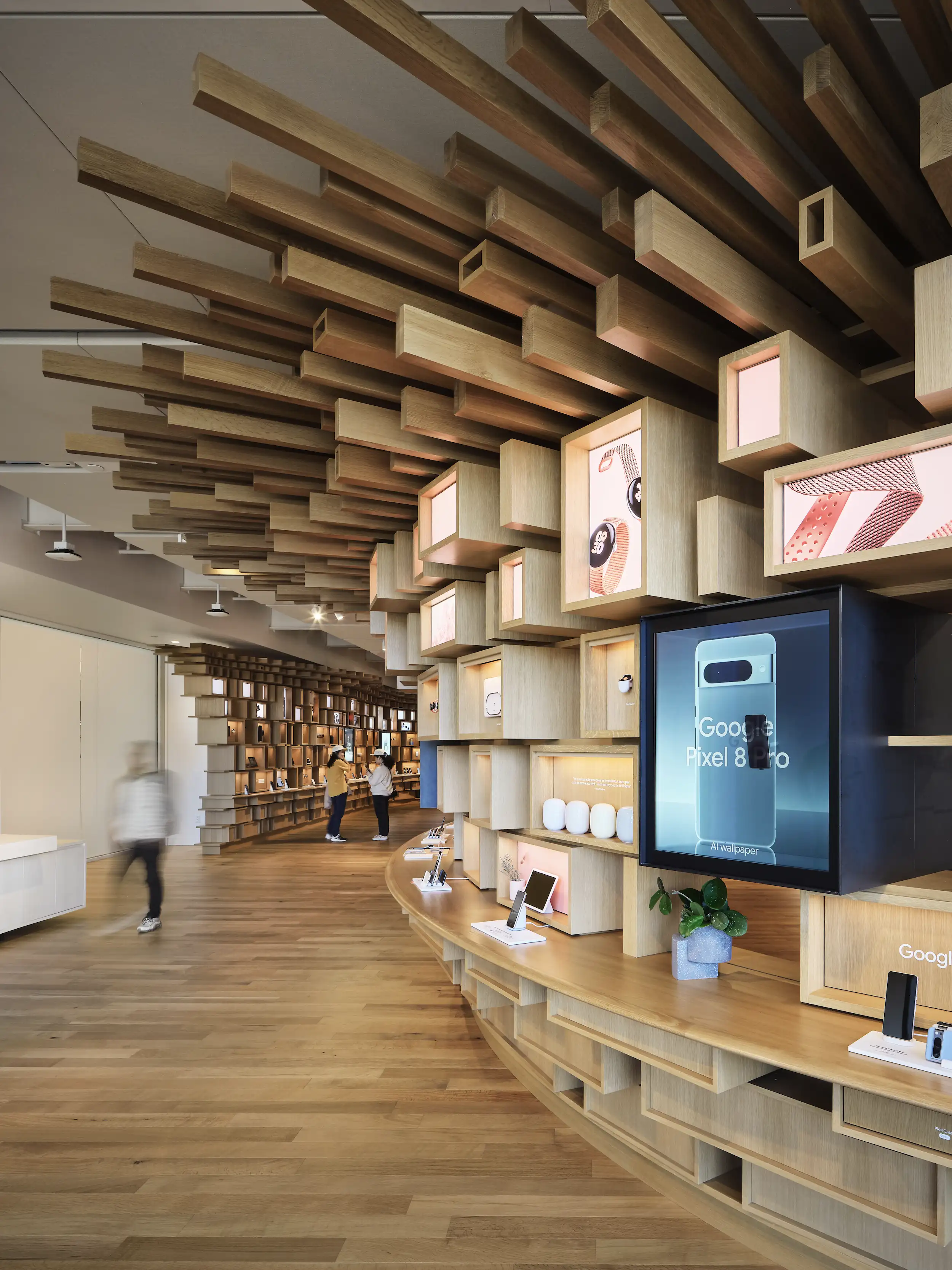
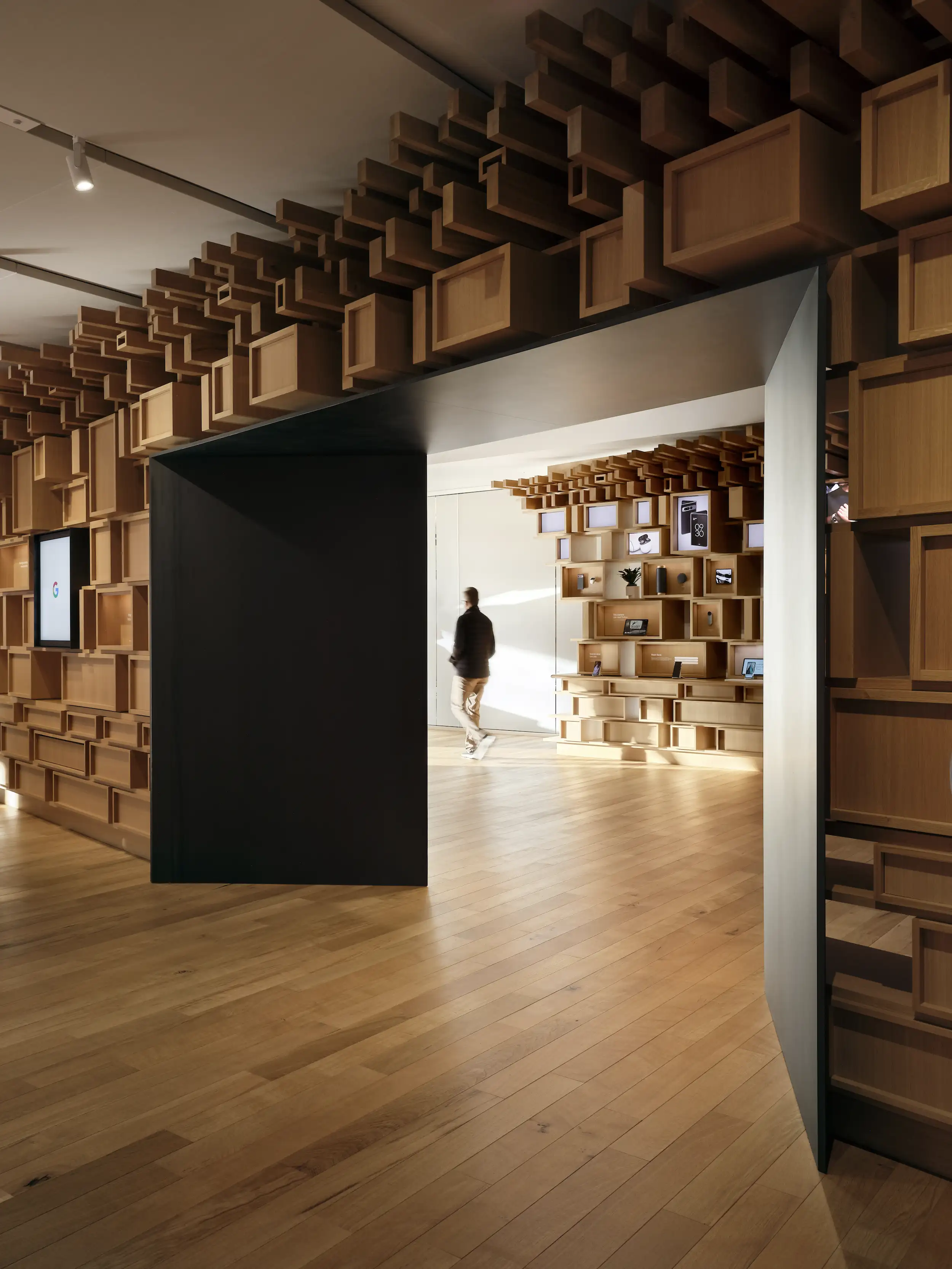
Photos © Adam Rouse
To build the composition, hundreds of oak-clad units are assembled in vertical layers—storage boxes on the bottom, hands-on areas in the middle, displays at the top, and a cantilevering cornice at the tippy-top. One side of the wall is devoted to product placement, the other to feel-good marketing. Aidlin Darling did “a lot of painstaking studies,” Chiang says, to figure out how the electrical cables and outlets necessary to power demo products and video screens make their way through this labyrinth while remaining out of sight.
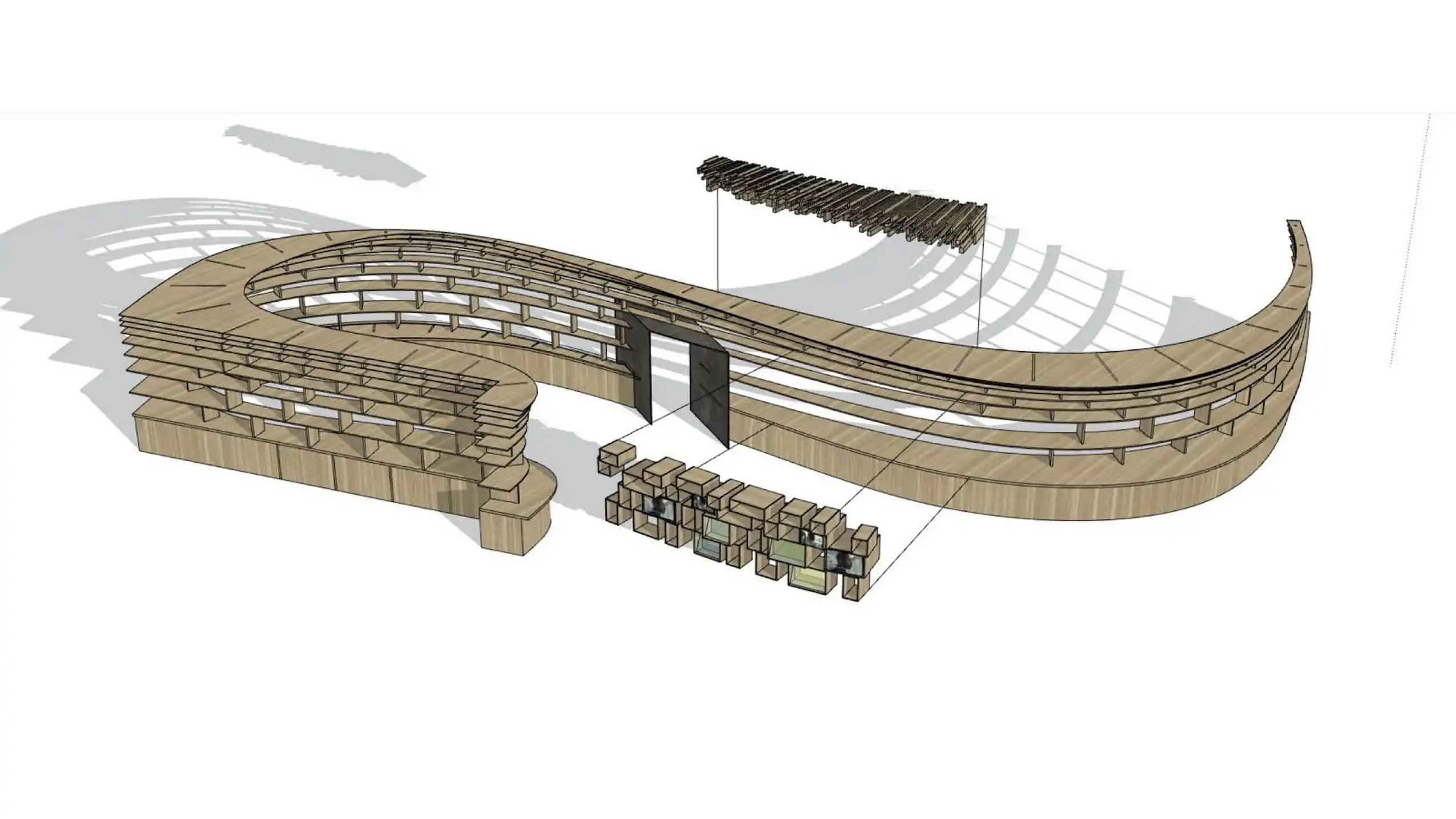
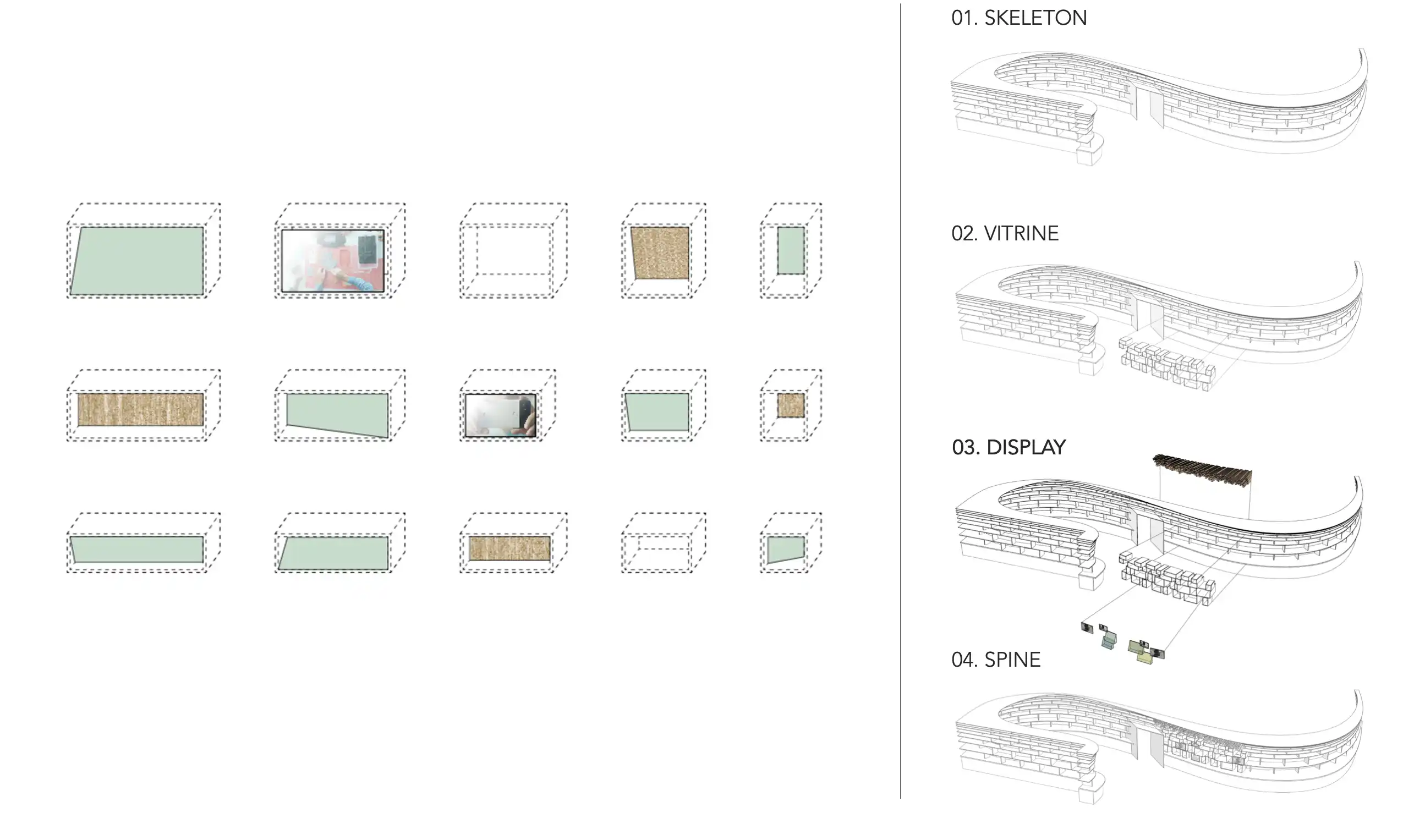
Images courtesy Aidlin Darling Design, click to enlarge
The complex construction creates a pronounced, curved spine and is meant to act as both an object of interest and a space-maker; Chiang compares the effect to that of a Richard Serra sculpture. Two steel-lined passageways cut through the ribbon wall, adding to the drama. The theatrics are intentional. “Obviously, you can buy Google products anywhere,” says Chiang. “This is a destination for introducing the entire line in hopefully a very immersive and interesting way.”
The store is part of the Google Visitor Experience, which also includes a café, a pop-up shop selling craft products, and a “huddle”—a meeting room for local organizations. Located in a small section of the large cube that is the new Google headquarters, designed by Bjarke Ingels Group and Heatherwick Studio, the store has some competition for attention. Its handwrought, low-tech aesthetic seems to beg to be noticed within BIG and Heatherwick’s solar-panel-clad, futuristic design. Yet Chiang claims this was not the intention. “We don’t see the store design as in opposition—it’s really a continuum,” he says. “If you look at how this building form is generated, it’s referencing the organic.”
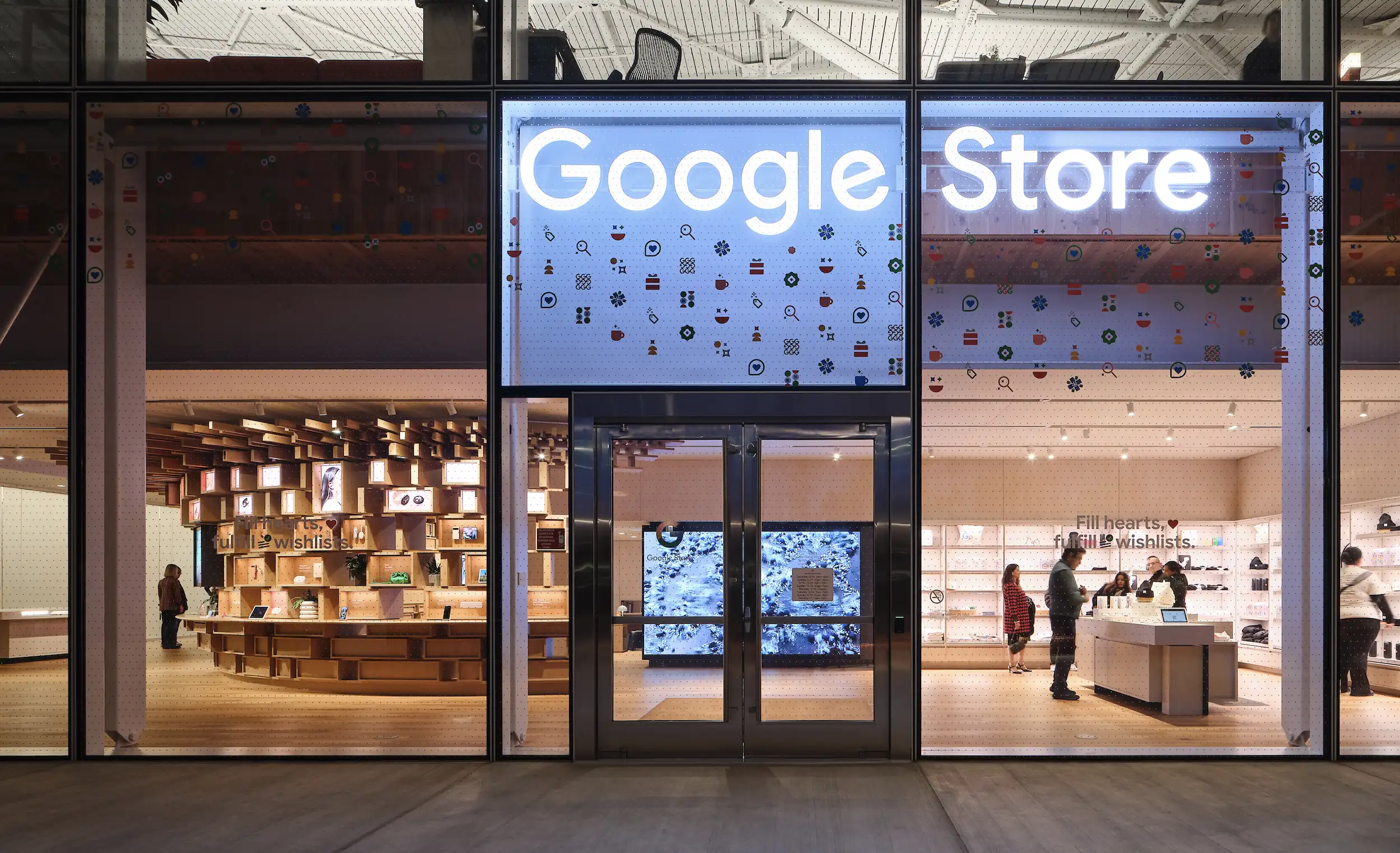
Photo © Adam Rouse


